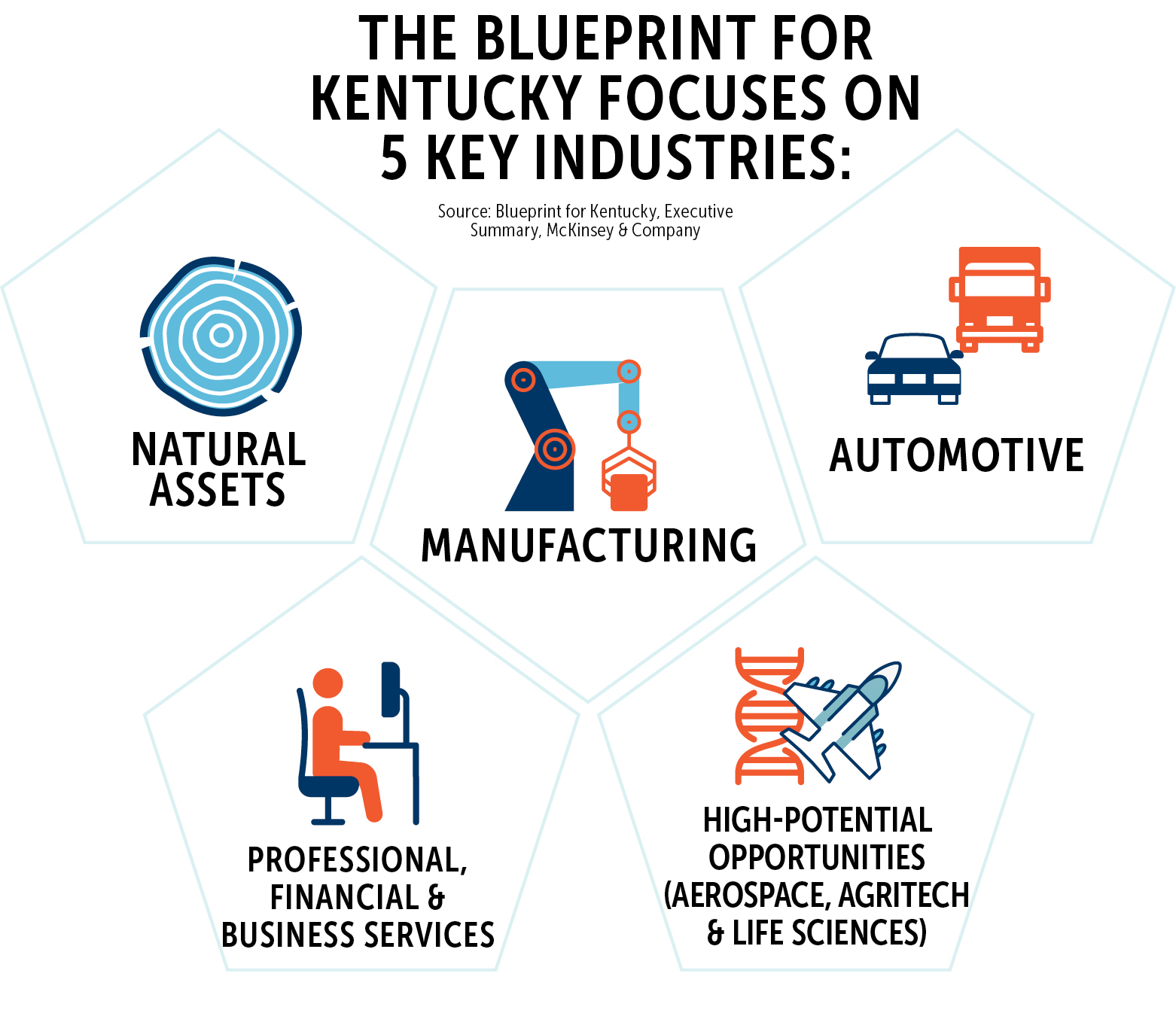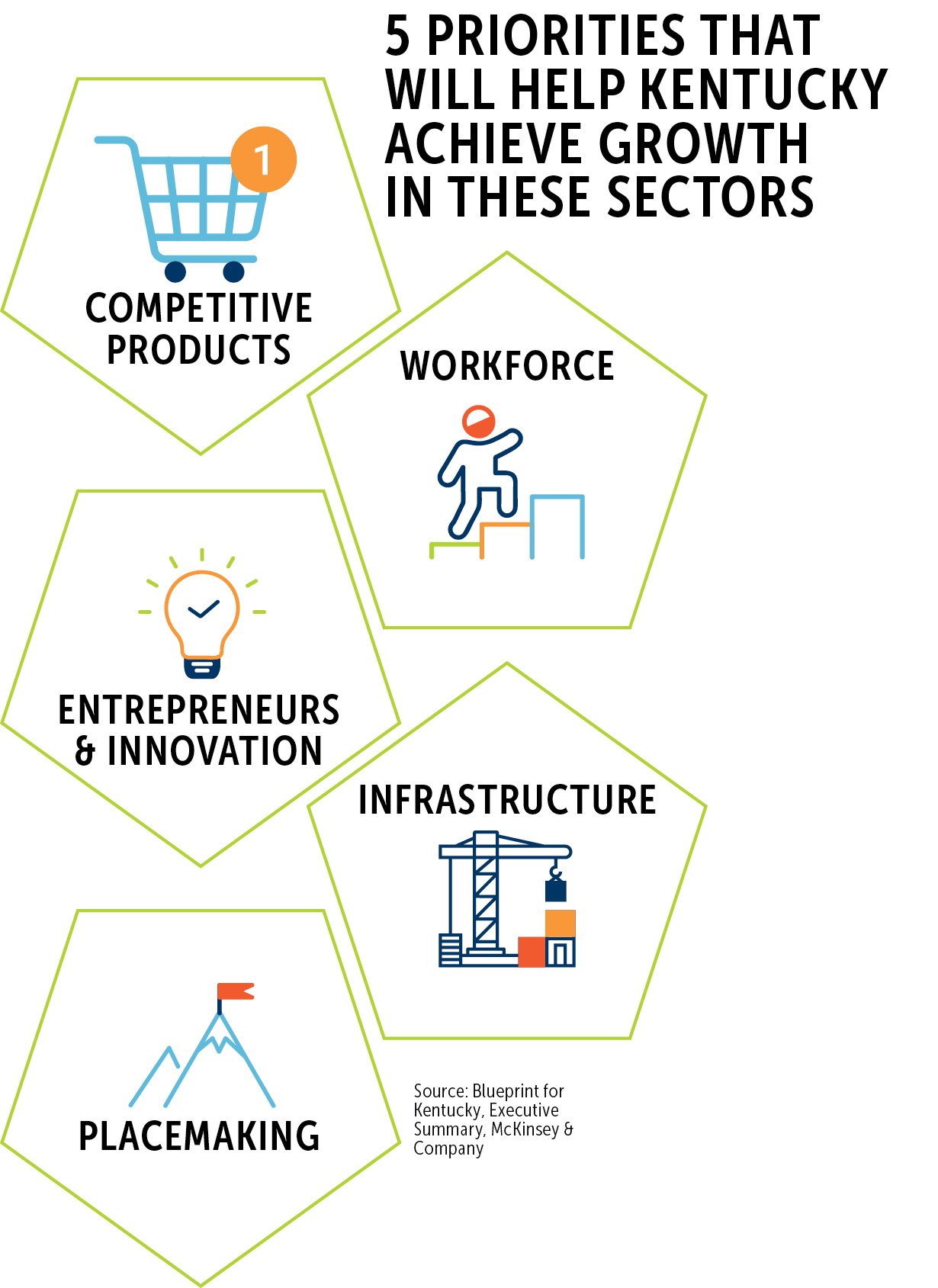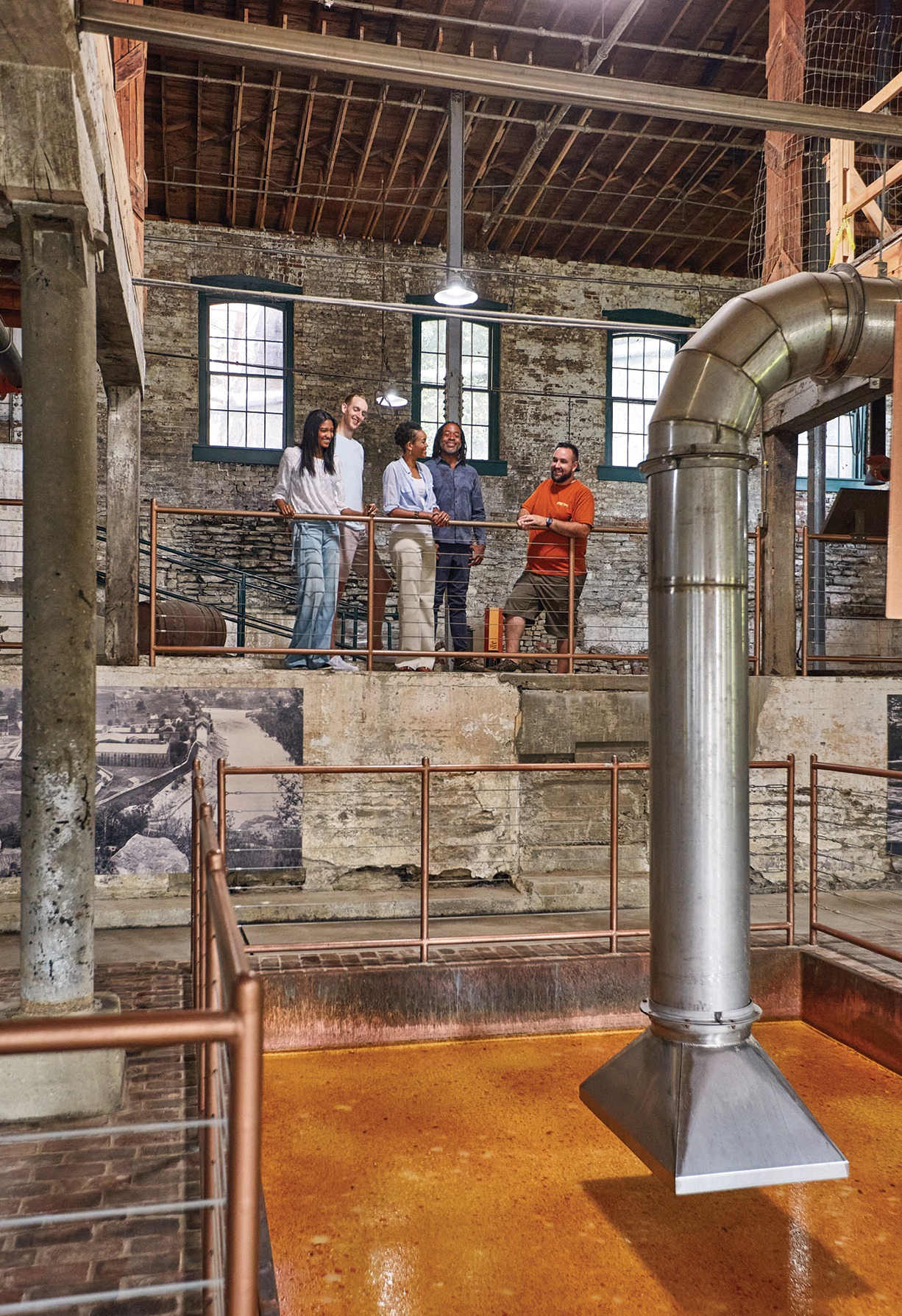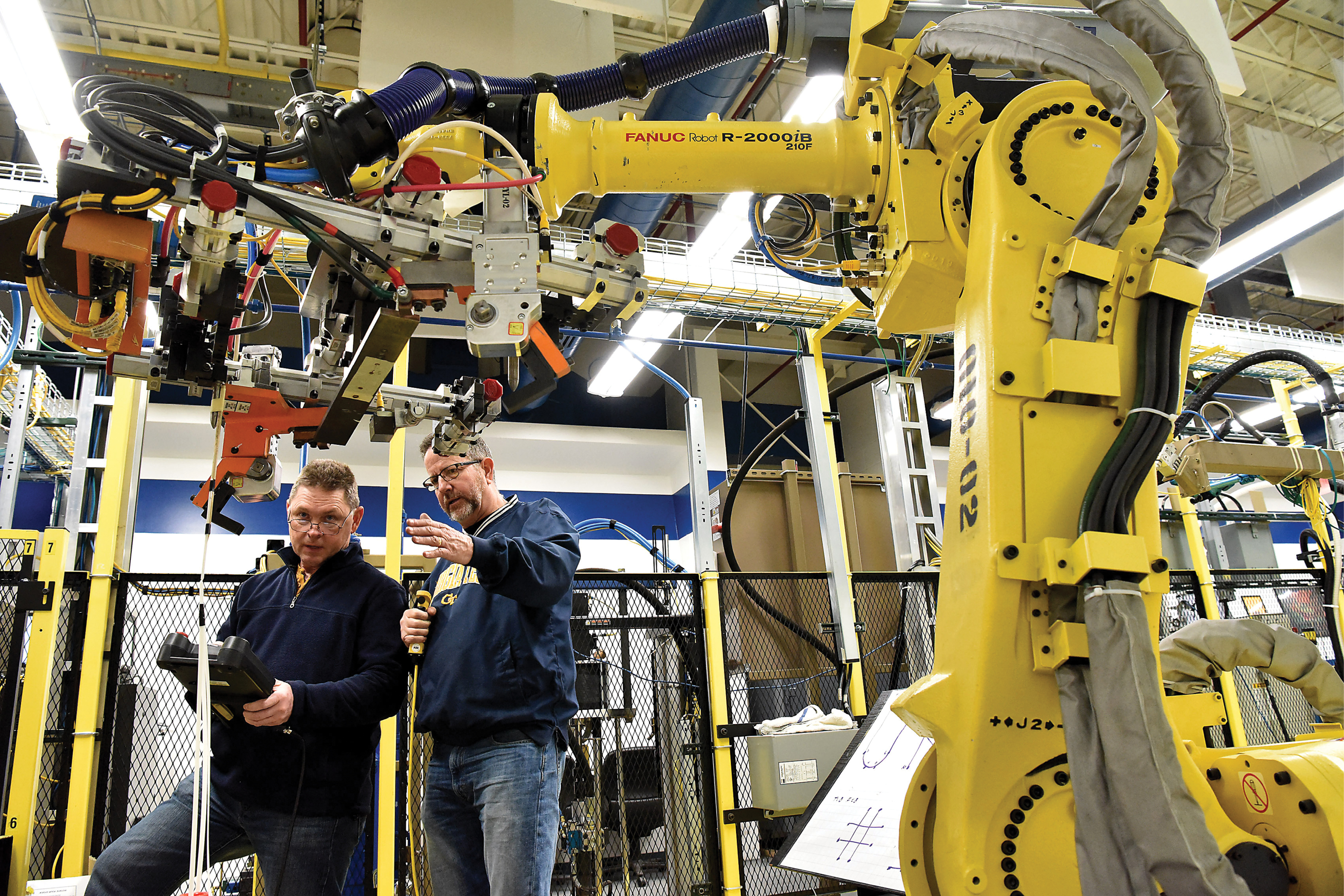Coming off a record-setting three-year run of economic development progress, what does Kentucky do for an encore?
We’re glad you asked that question, because Gov. Andy Beshear and his enterprising team at the Kentucky Cabinet for Economic Development (KCED) are already hard at work planning the next era of achievement.

Engaging the services of the world-renowned McKinsey & Co., Team Kentucky has put together what it calls the Collaborative Blueprint created by and for Kentucky’s Economic Developers. The idea behind this unique initiative is to build upon the state’s recent accomplishments by finding ways to capitalize on opportunities within industry sectors that have fueled Kentucky’s growth for decades, as well as those that are not traditionally Kentucky’s bread and butter.
“Creating this Blueprint for the future of Kentucky is a vital part of our efforts to build on what has been an incredible run of record-breaking economic success over the past four years,” Gov. Beshear said. “The collaboration required to make this possible is what defines Team Kentucky and why we have seen such amazing growth, which we’ll make sure continues into the years ahead.”
A collaborative effort between the Cabinet and the Kentucky Association for Economic Development (KAED), the Blueprint is a plan written by Kentucky’s economic developers for Kentucky’s economic developers.
The document’s idea is to help serve as a guide for growth throughout all pockets of the commonwealth over the next five years.
Jeff Noel, secretary at KCED, noted the importance of partners statewide working together toward a common goal.
“We all must come together to create the successes we achieve. It is time for us to seize this opportunity and make sure that we achieve success for all of Kentucky,” he said. “By laying out a Collaborative Blueprint by economic developers for economic developers, we are ensuring that this is a process executed at the local level. There are 120 counties across Kentucky. We believe that this Blueprint is the best work plan for bringing success to all 120 of them.”
Five overall objectives will drive this process, according to the Blueprint’s executive summary:
- Inclusive growth across Kentucky’s 120 counties.
- High-quality jobs that pay a family-sustaining wage.
- An environment that grows, attracts and retains businesses, including small, medium and large businesses.
- Welcoming and diverse communities where people from across the country will want to build their homes and a future for their families.
- Opportunities for Kentuckians to grow, develop and create their own destinies.
“We all must come together to create the successes we achieve. It is time for us to seize this opportunity and make sure that we achieve success for all of Kentucky.”
— Jeff Noel, Secretary, Kentucky Cabinet for Economic Development
Data analytics, subject matter experts and feedback from stakeholders around the state guided the process that produced the Blueprint. More than 3,500 business members of various chambers and industry groups contributed to this process.
Trends Shaping Kentucky’s Future
One of the report’s key takeaways is that Kentucky’s economy has an opportunity to take advantage of a world in transition. The report identifies five trends that are likely to have an outsized impact on Kentucky’s economic future:
- Technological change
- Shifting labor force dynamics
- Supply chain reconfigurations
- The low-carbon energy transition
- Federal funding
The crux of the report focuses on five key industry sectors poised to dominate Kentucky’s economy over the next five years, along with five priorities the state should pursue to help achieve this expected economic growth. The five sectors are as follows:
- Automotive
- Manufacturing
- Natural Assets
- Business, Financial & Professional Services
- High-Potential Opportunities, including Aerospace, Agritech and Life Sciences
The five priorities that will help Kentucky achieve growth in these sectors are:
- Competitive Products
- Workforce
- Entrepreneurs and Innovation.
- Infrastructure
- Placemaking
Winning the future means gaining an edge in the most value-added industrial sectors. That is why Kentucky will seek to become a world leader in both electric vehicle production and EV battery production. Furthermore, Kentucky will seek to be a leader in the U.S. manufacturing renaissance by creating an environment that makes the commonwealth a destination of choice for next-generation, industry-leading manufacturers.
 To do this, Kentucky’s leaders know they must out-compete other states for the opportunity to land these corporate investments. How does Team Kentucky build and maintain that edge? That is where the five priorities come into play. Creating an array of competitive products means Kentucky must adopt leading-edge incentives and Build-Ready sites that minimize the time it takes to go from project announcement to ribbon-cutting. Secondly, workforce programs must be modernized to be able to respond swiftly to rapidly changing needs at growing companies.
To do this, Kentucky’s leaders know they must out-compete other states for the opportunity to land these corporate investments. How does Team Kentucky build and maintain that edge? That is where the five priorities come into play. Creating an array of competitive products means Kentucky must adopt leading-edge incentives and Build-Ready sites that minimize the time it takes to go from project announcement to ribbon-cutting. Secondly, workforce programs must be modernized to be able to respond swiftly to rapidly changing needs at growing companies.
To attract more entrepreneurs Kentucky must become a launchpad for domestic and global startups and the capital it takes to fund them. Kentucky must also invest more into the infrastructure and placemaking required to build competitive communities.
No Community Left Behind
The Blueprint stresses that extra efforts must be made to accommodate the needs of Eastern Kentucky. Additional state investments into infrastructure such as water, power, broadband and roads will be required to ensure that the communities of Eastern Kentucky can capitalize on the state’s continued economic progress.

Buffalo Trace Distillery in Franklin County, Kentucky, has made whiskey for over 200 years.
Photo courtesy of Kentucky Tourism
Haley McCoy, president and CEO of the Kentucky Association for Economic Development, said, “We were involved in the process for the Blueprint for Kentucky. We met with the Cabinet and McKinsey frequently. The collaborative nature of this has been the goal from the start.”
McCoy heard from many of her 550 member economic developers that workforce and housing are the chief building blocks needed to ensure future economic success.
“We have a gap created by the retiring Baby Boomer generation. We need to find ways to transition more people from one career to another,” she said “The Blueprint gives us an opportunity to think about what we should invest in next.”
The Blueprint also emphasizes the need for further collaboration between KCED and KAED. “This Blueprint outlines how economic developers could work together at the state, regional and local levels to accelerate Kentucky’s progress,” the executive summary notes. “These efforts could involve best-practice sharing and enhancing the capabilities of economic developers across the commonwealth, building greater expertise in sectors critical to future growth, and defining and standing up new ways of collaborating within and across regions. KCED and KAED will have critical roles to play in promoting, catalyzing and sustaining such new ways of working.”
Team Kentucky and its partners statewide have a vision for the future that builds on recent success for decades to come. And with this collaborative effort, they have the blueprint to make that vision possible.
To learn more about Kentucky’s Collaborative Blueprint, visit CED.ky.gov.

